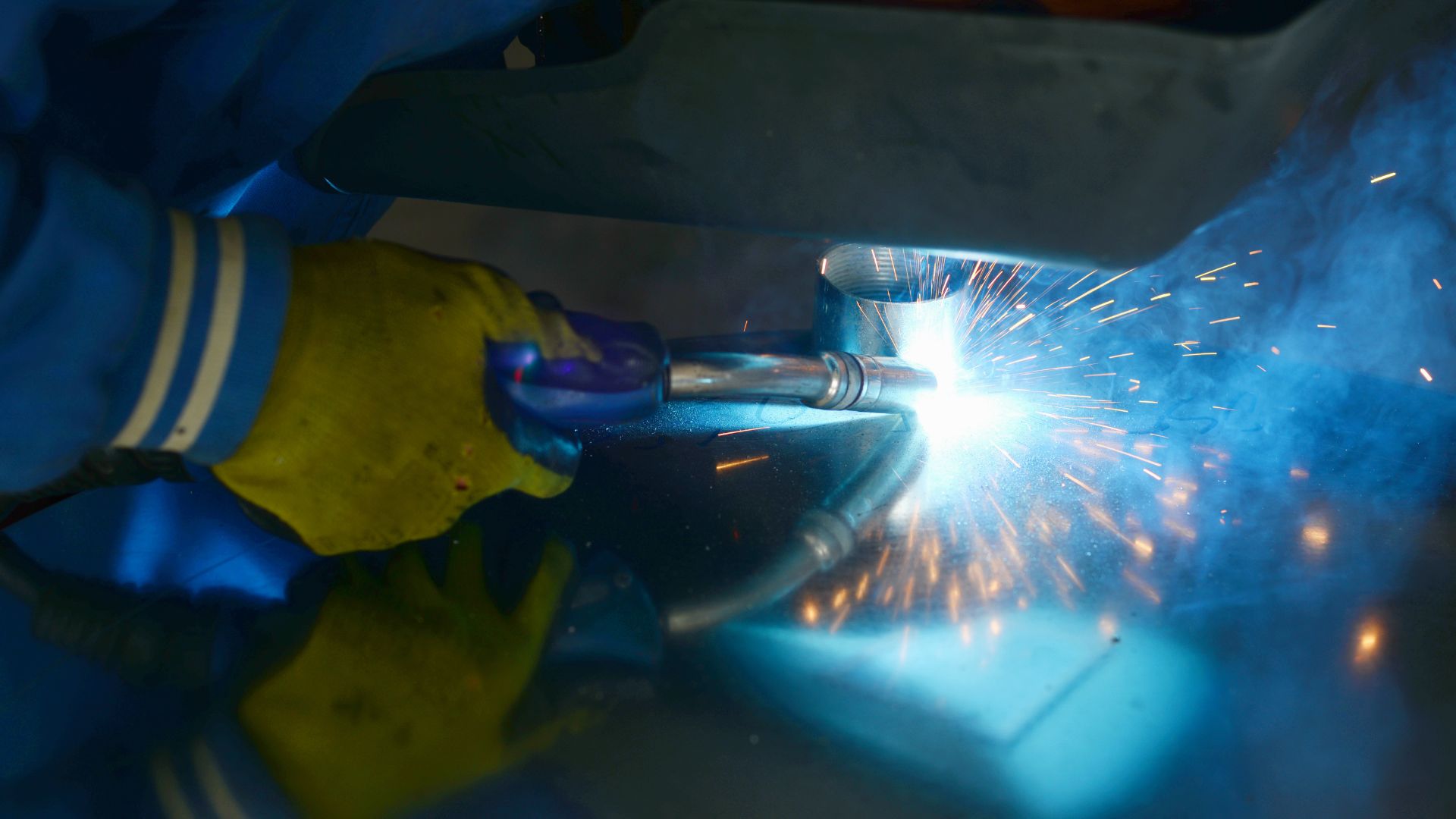
- For Hire
- For Sale
- Our Fleet
- Used Equipment

MIG welders, or Metal Inert Gas welders, are a type of equipment used in MIG welding – also known as Gas Metal Arc Welding (GMAW). They provide an adaptable solution for multiple welding materials, providing increased levels of productivity and an ease of use that is easier for less experienced welders to learn.
Ideal for multiple welding applications, Redrock’s fleet of high-performance MIG welders can be hired in a range of specifications for both short and long-term leases.

MIG welding involves the electric arc formation between an electrode wire within the welding gun and the workpiece metal. This workpiece metal is heated by the MIG welder, causing it to melt and join.
The process uses an inert gas to protect the weld pool from contamination by atmospheric gases such as oxygen and nitrogen. MIG welders are particularly effective for a thicker weld metal.
With a stellar reputation for designing and manufacturing the most robust welding equipment for a variety of sectors, including pipe shop solutions, wind tower production lines and much more, MIG welder rental from Redrock offers a flexible, cost-effective solution for any project, short-term or long-term.
Partner with industry leaders for robust equipment, precision engineered, maintained by trained and certified engineers, backed with our world-class service.
For Hire
Redrock’s fleet of MIG welders for hire and rent provides the optimum solution for high-paced production processes for your workforce.



Frequently Asked Questions
Although similar in process, there are indeed differences between TIG and MIG welding, primarily in the output of the weld.
MIG welders can be more time and cost-effective, however, TIG welding produces a stronger weld output and offers greater weld precision.
Metal thicknesses offer another point of difference between each option – MIG welding is better suited to working with thicker materials, whilst TIG welding is used for welding thin materials.
MIG welding provides multiple advantages, the most significant of these being the speed of the welding processes. Unlike some other processes, MIG welding can provide shorter production times and, in turn, lower costs.
MIG welding equipment is relatively easy to learn and use, making it suitable for beginners and less experienced members of your workforce. The continuous wire feed and automatic control of the shielding gas simplify the welding process and can be used to cover a range of tasks.
MIG welding equipment can weld a wide variety of metals, including carbon steel and stainless steel, making them versatile tools for thicker materials, various applications and industries.
The use of inert shielding gas throughout the welding process assists in the production of clean welds with minimal spatter and slag, reducing the need for extensive post-weld cleaning.
Whilst MIG welding produces results quickly and efficiently, the finished weld joint is not as strong and accurate as other welding styles and is generally less aesthetically pleasing than other welding processes. Due to the need for a gas supply throughout the process, MIG welding equipment can be less portable than other alternatives.
MIG welding isn’t ideally suited for welding thin metals, which benefit from the precision and accuracy offered by TIG welding, or short runs – the continuously fed wire utilised throughout the MIG process means that it’s suitable for longer runs.
Outputs of the MIG welding process offer less attractive welding methods than some alternatives, which must be weighed against the speed and ease of learning also offered by an MIG welding machine.
In comparison to some other welding machinery, MIG welders are often considered somewhat easier to master, and so are a great choice for beginners or less experienced staff.
With no foot pedal to master and the automatic feed of the continuous solid wire electrode through the welding torch, workers require only one hand to complete the weld. The automatic feed of filler material into the weld pool allows workers to move the weld puddle faster without overheating the equipment.
Equipment rental from Redrock offers your workforce the opportunity to work with MIG welding equipment on a trial basis before making the decision to purchase.
MIG stands for Metal Inert Gas – only inert gases or gas mixtures are used for the shielding gas when MIG welding. Whilst the gas itself can vary with each use case, commonly used inert gases in MIG welding are argon and helium. These gases are usually used for welding aluminium and other non-ferrous metals.